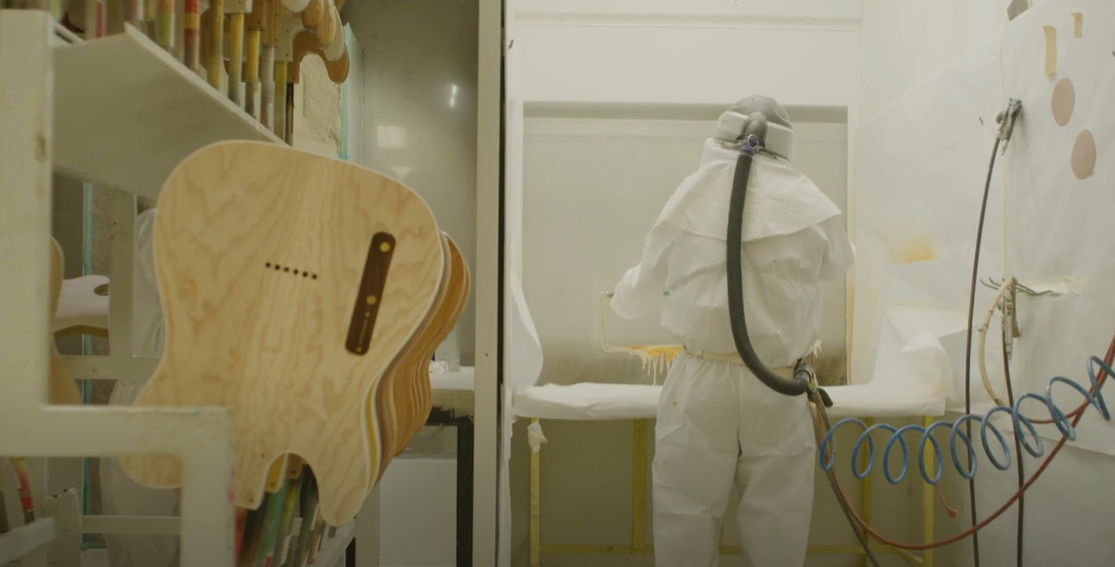
Explore The Fender x Kyser Colormatch Process
Think our new Fender® x Kyser® capos are cool? Well, seeing the handcrafting process in action is even cooler. We're giving you an inside look at how the magic happens, with the help of Kyser’s Director of Manufacturing, Waylon Alexander, and Fender’s VP of Accessories & Licensing, Richard Bussey.
A Quick History of Fender's Classic Colors
How exactly did the iconic colors first come to existence in the first place? During the 1950s and 60’s, America saw an incredible boom in the automotive industry. As a result, manufacturers offered attractive finishes and colors on their products such as switches, buttons, interiors, and exteriors. The trend caught the attention of guitar makers such as Fender, who would then apply it to their own instruments. These custom colors used by Fender came from the automotive industry for a few reasons: there were many shades to choose from since the colors were a strong selling point, car paints adapted well in terms of applying and drying quickly in an industrial environment, and they were easy to obtain.
Because the colors sustained their popularity well beyond their heyday, guitar makers continue to use them on their production lines today. Fender uses a variety of paint finishes on their instruments, from the original nitrocellulose lacquer finishes from the vintage 1950s-’60s era to modern day urethane and polyester finishes.
Fender's Top-Notch Factory Treatment
It' at the Fender Factory in Corona, California, where every Fender guitar gets the red-carpet treatment and is taken to individual paint booths for coating application. Each instrument is hand sprayed to the proper, era-correct colorways. Whether painting Olympic White (as seen here), or any other vintage color, the team faithfully recreates the look of and chemistry of the classic paint finishes.
“Fender’s legendary paint finishes are truly the colors of rock 'n' roll, and Kyser’s ColorMatch Process™ faithfully recreates the look of these iconic instruments.” - Richard Bussey
So when the team at Kyser wanted to dutifully replicate these legendary shades, we wanted to ensure they were just as precise.. And for that reason, the ColorMatch Process™ was created. The ColorMatch Process™ involves recreating classic Pantone® colors with a state-of-the-art photospectrometry tool, then customizing and comparing different shades against several classic, vintage, and modern day Fender guitars.
Perfecting The Process At Kyser
To begin the ColorMatch Process™, the color of the panel to be matched is first measured using a color photo-spectrometer. This tool provides several mix variations and creates a master standard using multiple colors with the exception of black and white. A Kyser lab technician is then assigned to match these colors. In order to achieve a base color, metallic colors also go through the same procedure. The tech then attempts to match the metallic look of the sample using a range of metallic components. Next, multiple adjustments to color components in varying proportions are made. It’s rare that any color is matched on the first attempt! “It takes an extremely skilled technician to perform the ColorMatch Process™ which some consider an art.” - Waylon Alexander
In some complex color matching cases, a PMS color will be provided to match and in some other cases, PMS colors cannot be matched. PMS colors are produced with ink colorants which are primarily used in the printed media market. The reason these colors can be difficult to match is because powder manufacturers use dry powder pigments rather than ink colorants.
All samples are made of a base formulation of powders that produce a certain level of glossiness or smoothness. Halfway to the final result!
When matching a color, all of the components used in a powder are solid and dry. For every attempt, the dried components made up of resins, pigments, rare earths, and catalysts are blended up on a small scale then extruded into a hard compound. This compound is then ground up into powder particles that can be sprayed electro-statically---and finally, applied to the capo!
New Specs With Familiar Colors
The paint process isn't the only thing that we've perfected---the new capos also feature a new 9.5” radius that has been tested on dozens of classic and vintage Fender guitars.
The Fender x Kyser capos are available in four classic colors: Olympic White, Surf Green, Butterscotch Blonde, and Daphne Blue. Go out and get your piece of history, today.



Leave a comment
This site is protected by hCaptcha and the hCaptcha Privacy Policy and Terms of Service apply.